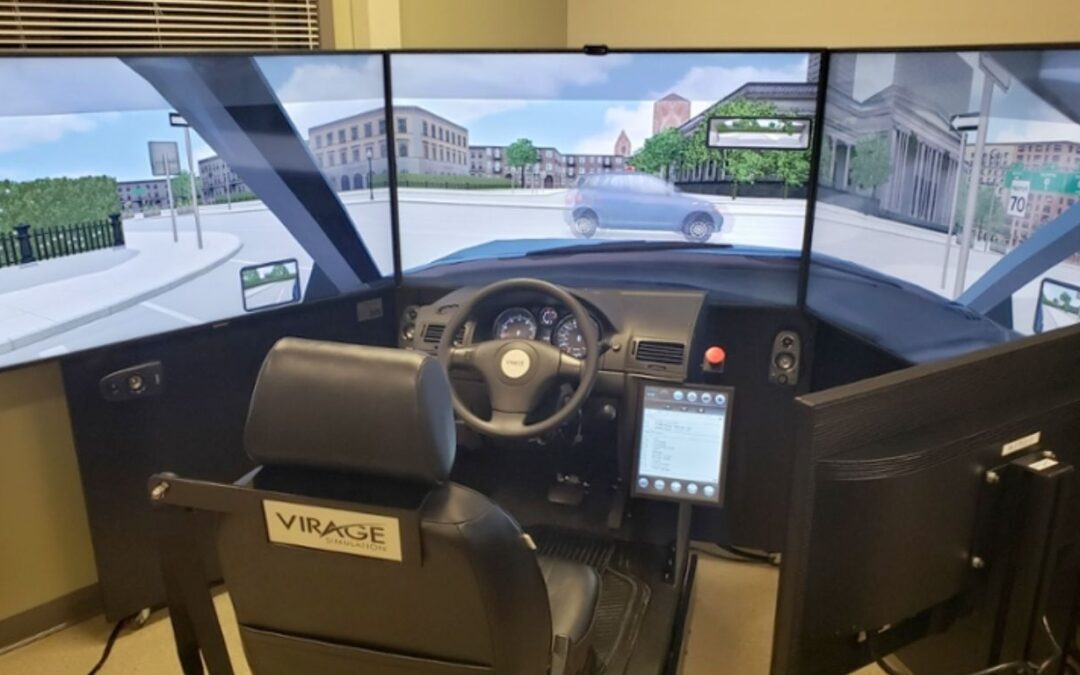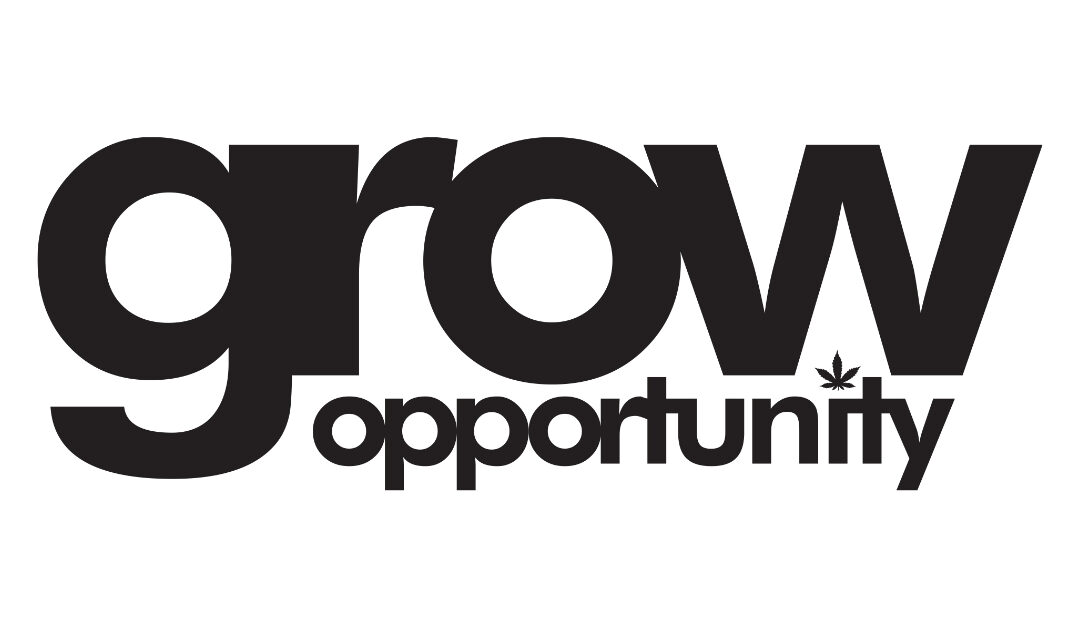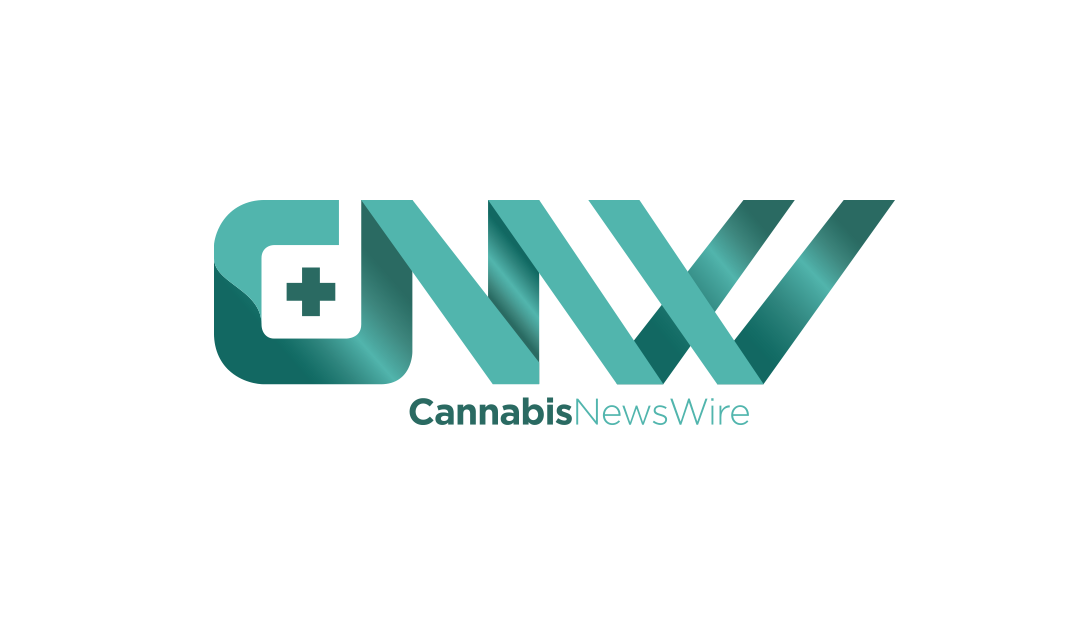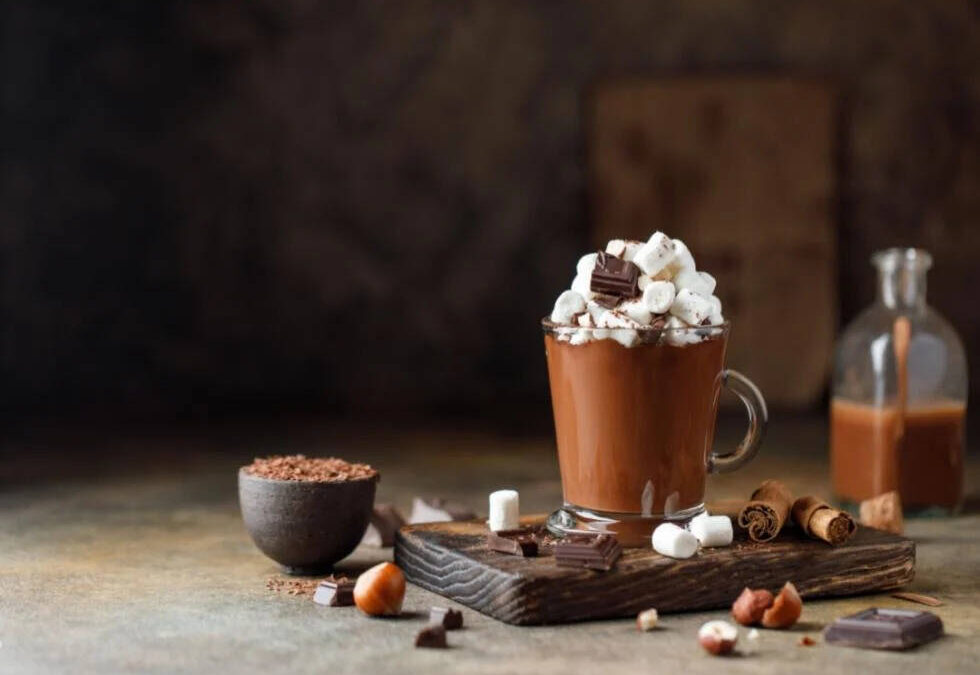
by Grow Up Conference | Dec 11, 2024 | Media Partners, Stratcann
The Federal government’s Bill C-5, passed in 2022, An Act to amend the Criminal Code and the Controlled Drugs and Substances Act, sought to, among other things, keep convictions for simple drug possession “separate and apart” from other convictions.
The bill contained an amendment that gave the government two years to sequester all simple possession records for cannabis and other drugs across the country. This required harmonizing records across multiple jurisdictions, something the federal government has repeatedly highlighted as a challenge. This means those charges would no longer show up on criminal background checks.
There was a November deadline for that process, which the federal government was, unsurprisingly, unable to meet.
Annamaria Enenajor, a criminal defence lawyer and former director of the advocacy group Cannabis Amnesty, told CBC News she isn’t surprised that the “ambitious” deadline was not met, given the challenges of coordinating such a move across the country.
“You can’t just press control-alt-delete and have them all disappear,” she told the CBC.
“The program is very ambitious, given how many levels of government are involved in the collection and preservation of records,” she added.
“There would have to be a coordinated effort on the part of the federal government to work with the provincial government and various law enforcement entities around the country. And I just haven’t seen that happening.”
The amendment sought to address one of the challenges the federal government has faced in clearing people’s records for simple cannabis possession charges.
Five years since the Liberal’s cannabis pardon program was launched, the Parole Board of Canada says only 845 pardons for cannabis possession have been granted.
NDP MP Randall Garrison, who introduced the amendment adopted into the bill to sequester those possession records, has noted in the past that the amount of bureaucracy required to implement such a change is a complicated one that he did not expect the government to be able to meet.
Conservatives, meanwhile, have been calling on the government to reverse Bill C-5 entirely, which they have argued is soft on crime.
While the Liberals passed legislation that allowed for pardons for low-level cannabis charges, the NDP has repeatedly called for further regulatory change that would automatically wipe such records clean.
The process behind such a proposal requires significant logistical changes to Canada’s criminal record-keeping system, although a program that would do just that has been tabled in the Senate several times. The NDP also presented a Primate Members Bill in late 2018, C-415, that would have called for a process where expungement requests were reviewed by the Parole Board of Canada.
While Bill C-93 partially addressed some of the issues for those with cannabis possession charges by removing the $631 fee and a ten-year wait time, it still means many hurdles for those applying, namely the cost of fingerprinting and seeking out those records. This is because of Canada’s archaic, outdated record-keeping method, where there is no single, online database of all criminal charges, meaning many arrest records are kept in courthouses and with police record keepers in the jurisdictions where the charges were originally laid.
This outdated, paper-based system, as well as the nature of how cannabis possession charges are recorded only as generic drug charges, was also part of why C-93 didn’t offer automatic record expungements for cannabis charges.
In October, just a month before the deadline, Public Safety Minister Dominic LeBlanc issued a ministerial directive instructing the RCMP not to disclose simple possession offences when completing background checks “unless otherwise required by law.”
Related Articles

by Grow Up Conference | Dec 11, 2024 | Media Partners, Psychedelic News Wire
Psilocybin is a psychoactive compound that naturally occurs in some species of hallucinogenic mushrooms. When ingested, this compound is converted into psilocin and interacts with serotonin receptors in the brain. This interaction results in altered mood, perception, and cognition and may produce vivid auditory and visual experiences as well as profound spiritual and/or emotional insights.
Now a new study has found that psilocybin may help improve sleep quality and reduce symptoms of depression. This isn’t the first study to investigate the therapeutic effect of psilocybin on mental health conditions either.
Various studies have found that this psychedelic compound has the potential to treat conditions like post-traumatic stress disorder, anxiety, and depression by inducing rapid and lasting improvements in mood after 1 or 2 sessions. This is different from conventional antidepressants, which require long-term use and take time before their effects start to show.
The new study was led by Robin Carhart-Harris and Matthew J. Reid, whose objective was to understand if disturbances in sleep influence psilocybin’s antidepressant effects and if the psychedelic improved sleep quality.
This, they hoped, would inform whether sleep could be used as a new therapeutic target to enhance the effectiveness of pharmacological treatments or replace them. For their study, the investigators recruited over 600 participants who had planned to attend guided psychedelic sessions involving psilocybin like ceremonial experiences or retreats.
Roughly 60% of the participants met the diagnostic criteria for depression, with the investigators finding that almost all of them suffered from sleep disturbances. Insomnia was the most common complaint, followed by awakening early and hypersomnia.
Additionally, sleep issues were the most severe symptom of depression for 26% of the participants. When psilocybin was administered, the investigators found that it decreased symptoms of depression.
In particular, they observed that depressive symptoms had reduced by about 33% just two weeks after the drug was first administered. By the 4-week mark, the symptoms had dropped by more than 50%, with the investigators noting that these improvements were more noticeable in those who had severe depression at the beginning of the study.
Additionally, they examined the relationship between depression and sleep disturbances, finding that those who had serious sleep issues at the beginning were less likely to experience relief from depression, even if some symptoms were alleviated.
Reid explained that this suggested that sleep disturbances could interfere with the therapeutic effects of psilocybin, possibly acting as a barrier to delivering the best outcomes.
The study’s findings were reported in Current Psychiatry Reports. Other researchers involved in the study included Brandon Weiss, Hannes Kettner, and Tessa F. Blanken.
Enterprises like Seelos Therapeutics Inc. (NASDAQ: SEEL) are also engaged in studying psilocybin and other hallucinogens to unearth their therapeutic applications. As their work hits different milestones, we are bound to learn how exactly these substances work to address different mental health conditions.
About PsychedelicNewsWire
PsychedelicNewsWire (“PNW”) is a specialized communications platform with a focus on all aspects of psychedelics and the latest developments and advances in the psychedelics sector. It is one of 60+ brands within the Dynamic Brand Portfolio @ IBN that delivers: (1) access to a vast network of wire solutions via InvestorWire to efficiently and effectively reach a myriad of target markets, demographics and diverse industries; (2) article and editorial syndication to 5,000+ outlets; (3) enhanced press release enhancement to ensure maximum impact; (4) social media distribution via IBN to millions of social media followers; and (5) a full array of tailored corporate communications solutions. With broad reach and a seasoned team of contributing journalists and writers, PNW is uniquely positioned to best serve private and public companies that want to reach a wide audience of investors, influencers, consumers, journalists and the general public. By cutting through the overload of information in today’s market, PNW brings its clients unparalleled recognition and brand awareness. PNW is where breaking news, insightful content and actionable information converge.
To receive SMS alerts from PsychedelicNewsWire, text “Groovy” to 888-902-4192 (U.S. Mobile Phones Only)
For more information, please visit https://www.PsychedelicNewsWire.com
Please see full terms of use and disclaimers on the PsychedelicNewsWire website applicable to all content provided by PNW, wherever published or re-published: https://www.PsychedelicNewsWire.com/Disclaimer
PsychedelicNewsWire
San Francisco, CA
www.PsychedelicNewsWire.com
415.949.5050 Office
Editor@PsychedelicNewsWire.com
PsychedelicNewsWire is powered by IBN

by Grow Up Conference | Dec 11, 2024 | Media Partners, Stratcann
Researchers at the University of Saskatchewan’s Driving Research and Simulation Laboratory will begin looking at how cannabis edibles impact people’s ability to drive in 2025.
“There’s a lot of research on smoked cannabis and the impacts on driving, but very little on the effects of edibles,” Alexander Crizzle, the lab’s director and an associate professor of public health, tells the CBC.
Participants in the study will get to eat a 10 mg THC edible and will be provided with snacks and cab fare home.
The research team will then measure participants’ impairment utilizing their in-house driving simulator, Crizzle tells the CBC in Saskatchewan.
“We also have a battery of tests where we can look at how people think and we kind of stress them out a little bit to see how well they perform under a certain amount of stress. That kind of gives us a good indication of how much the edibles are impacting their ability to think and drive.”
The Driving Research and Simulation Laboratory (DRSL) at the University of Saskatchewan is directed by Crizzle and contains state-of-the-art driving simulators to study the impact of technology, rehabilitation, road design (e.g., intersections, roundabouts, bicycle lanes), and training. Among other features, the DRSL also has a full array of clinical assessments such as vision, cognition, and motor tests.
The lab is also a co-investigator in the multi-year “Don’t Drive High” campaign from 2021-2024, with funding from the Canadian Institute of Health Research (CIHR). This Canada-wide project partnered with young Canadians to better understand the factors that influence their decision to drive high.
A recent 2023 report from Public Safety Canada found that 23% of cannabis users nationwide admitted to driving within two hours of consumption.
In new figures from 2024, the number of people who reported using cannabis before driving (18%) increased slightly from the year prior (15% in 2023) but is still lower than the 27% who reported doing so in 2018.
This included 16% who reported driving within 2 hours of smoking or vaporizing cannabis and 10% who reported driving within 4 hours of ingesting cannabis.
Of those who reported using cannabis in the past 12 months, 78% said they believe that cannabis use impairs one’s ability to drive, while 13% responded that it depends, and 6% responded that it did not impair one’s ability to drive.
Image via usask.ca

by Grow Up Conference | Dec 10, 2024 | Grow Opportunity, Media Partners
(Globe Newswire) Toronto – The Boston Beer Company, makers of fan-favourite TeaPot, today unveils Emerald Hour, a line of non-alcoholic “Cali Sober” cannabis cocktails. These premium rosin-infused beverages represent the height of the cannabis beverage experience and are now available at licensed cannabis retailers in Ontario.
Emerald Hour blends fresh-frozen cannabis extracts with regionally sourced cocktail ingredients to create a truly amazing full-spectrum beverage experience. Each 355mL can contains 10mg of THC and is made without the use of chemical solvents, making Emerald Hour a perfect choice for consumers seeking a stronger, booze-free happy hour.
“We know many folks want great-tasting and premium alternatives to alcohol, and Emerald Hour is the solution they’re looking for,” said Paul Weaver, director and head of cannabis at Boston Beer. “These cannabis cocktails are not for the uninitiated, with each 355mL can containing 10mg of full-spectrum solventless THC extract.”
Emerald Hour will begin with two delicious cocktail styles:
- Cranberry-Citrus: Crafted with real lime and cranberry juice, it’s a modern take on the metropolitan classic.
- Ginger-Lime: Made with specially selected ginger extracts, it’s a spicy mule without the alcohol.
More styles are planned for release through 2025.
Emerald Hour comes from the makers of TeaPot cannabis-infused iced teas as well as the brewers behind such iconic drinks as Truly Hard Seltzer, Samuel Adams, and Twisted Tea. It is produced at Peak Processing Solutions (Windsor, Ontario).
For more information, visit http://emeraldhourcannabis.com and follow @DrinkEmeraldHour on Instagram to receive the latest updates.

by Grow Up Conference | Dec 10, 2024 | Cannabis News Wire, Media Partners
Marijuana industry leaders have countless opportunities to form connections and secure business deals at this year’s MJBizCon. MJBizCon 2024 kicked off on Tuesday at the Las Vegas Convention Center, starting with preshow sessions and running through Friday.
To make the most of the world’s largest marijuana business event, it’s essential to arrive with a strategy but also stay adaptable for unforeseen opportunities, according to seasoned attendees who’ve successfully navigated the event.
According to Azuca CEO Kim Sanchez Rael, flexible scheduling is vital since some of the best opportunities come from unexpected encounters. For instance, an impromptu conversation during a preshow lunch at a prior MJBizCon led to a partnership with Wana Brands, a major edibles manufacturer.
Exhibitions have also proven beneficial for Azuca as they provide visibility and a base for meetings. Sanchez notes that being present at a booth allows her company to showcase products, engage with attendees, and even test interest in items not yet launched.
Before the event, Azuca engages in targeted outreach through email campaigns, social media platforms like LinkedIn, and word-of-mouth connections. Sanchez and her team also prearrange meetings with businesses they’re interested in partnering with, ensuring their time at the event is productive.
Another MJBizCon veteran who emphasizes the need for planning is Joe Salome, CEO of Georgia Hemp Co. He recommends researching the exhibitor map in advance to prioritize specific companies and objectives.
However, both Sanchez and Salome agree that maintaining some flexibility is crucial, as chance meetings can result in valuable connections. Salome recounts instances where unplanned interactions at a bar or networking event turned into meaningful business discussions.
Networking at MJBizCon is not limited to the show floor. Preconference breakfasts, lunches, and after-parties are prime opportunities to meet industry professionals. Sanchez Rael advises teams to split up during these events to maximize their networking reach. Salome underscores the importance of attending these gatherings, even when exhaustion sets in, as they often yield unexpected benefits.
MJBizCon is especially valuable for businesses from emerging marijuana markets. Salome points out that in regions like Georgia, where industry infrastructure is still developing, the event offers a chance to connect with suppliers, manufacturers, and other key players. He recalls his first MJBizCon experience in 2015, which helped his company build long-lasting relationships and gain insights from more established markets.
Sometimes, connections made at the event don’t bear fruit until much later. For instance, Jon Spadafora, who launched Flower Union, credits a product introduction at MJBizCon 2022 as the inspiration behind his new edibles line. Conversations with Sanchez on the exhibit floor and at after-parties helped shape his vision, ultimately leading to the creation of a unique product line.
Although MJBizCon is an excellent venue for finding potential partners, industry veterans caution against rushing into agreements. Salome recommends thoroughly evaluating potential collaborators to ensure they align with long-term goals. He suggests holding off on finalizing deals at the event, as emotions can run high in such an environment. Instead, use the convention as an opportunity to gather information and ideas to implement later.
For established firms like Green Thumb Industries Inc. (CSE: GTII) (OTCQX: GTBIF), every opportunity to interact with other members of the cannabis industry is welcome since avenues for brand promotion can arise.
About CNW420
CNW420 spotlights the latest developments in the rapidly evolving cannabis industry through the release of an article each business day at 4:20 p.m. Eastern – a tribute to the time synonymous with cannabis culture. The concise, informative content serves as a gateway for investors interested in the legalized cannabis sector and provides updates on how regulatory developments may impact financial markets. If marijuana and the burgeoning industry surrounding it are on your radar, CNW420 is for you! Check back daily to stay up-to-date on the latest milestones in the fast -changing world of cannabis.
To receive SMS alerts from CNW, text CANNABIS to 888-902-4192 (U.S. Mobile Phones Only)
For more information, please visit https://www.CannabisNewsWire.com
Please see full terms of use and disclaimers on the CannabisNewsWire website applicable to all content provided by CNW, wherever published or re-published: https://www.CannabisNewsWire.com/Disclaimer
CannabisNewsWire
Denver, CO
www.CannabisNewsWire.com
303.498.7722 Office
Editor@CannabisNewsWire.com
CannabisNewsWire is powered by IBN

by Grow Up Conference | Dec 10, 2024 | Media Partners, Stratcann
A cannabis education group has teamed up with a cannabis testing lab in BC to look into the impacts of remediation on cannabis.
Francis Hall and Tom Rothmeier, the team behind Urbanistic, a cannabis education and quality grading company based in BC, recently launched a study looking into how cannabis is affected by the e-beam remediation process, not just immediately after remediation but also several months later.
While there have been studies done on the effects of irradiation on cannabis, those results were only looking at the immediate impacts, not long term, says Hall. He and his partner Rothmeier wanted to better understand how that process can change cannabis after it’s sat on shelves.
Hall says the idea is one he has been looking at for a while, and it finally came together once they found the right partners, with both a local producer providing cannabis samples and a local lab to test those samples.
The unnamed producer is providing two 160-gram samples from the same lot/batch, one that will go through a standard e-beam remediation process and one that will not. Those samples will then be shared with analytical cannabis testing lab Northern Scientific, also in BC, which will test them for things like cannabinoid and terpene levels, as well as microbes like mould and mildew.
Those samples will be tested right after the e-beam remediation process, done at a facility in BC, and again after three, six, and, ideally, nine months. This will give a better real-world look at how the e-beam process impacts both product quality and shelf stability for microbials.
“It just struck me that a big thing we’re missing is we’re not reflecting the average supply chain that a product actually goes through until it reaches the consumer,” he explains. “So that was more the point that I was coming from. Is this research fit for purpose and an accurate representation of how a product typically gets remediated and moves through the supply chain?”
Zack Paul, the CEO and founder of Northern Scientific, Inc., located in Langley, BC, says he was eager to participate in the research when approached by Urbanistic. Not only is he interested to see the long-term effects of remediation on cannabinoids and terpenes, but also the long-term implications of the effect of microbials on shelf-life stability.
This is important not only for cannabis sold in Canada—which might wait weeks or months from harvest to being sent to a distributor, then to a store, before a consumer buys it—but also for cannabis sold on the international market. These products, he says, can often take an even longer and more circuitous route to consumers, making it especially important to ensure the remediation process helps hold back unwanted microbial growth not just immediately after but several months later.
“We’re very happy to be on board, and it’s fascinating, the information we’re going to see at the end of this,” says Paul. “It’s valuable research that we just don’t have.”
“No one really does testing post-e-beam or irradiation for potency or terpenoids, so to be able to see what degradation, analytically, we can find is going to be fascinating.
“As well, with microbiology, we know that with irritation or e-beam, it more or less stunts or puts those microbes dormant. It doesn’t kill them completely. So you will start to see regrowth, it’s just a matter of when.”
Urbanistic is hosting a GoFundMe campaign to help raise $15,000 to pay for the research. Although the page refers to research on irradiation, Hall reiterates that the research is specifically on the e-beam process, which differs somewhat from the irradiation process. Both are used by cannabis companies in Canada for the purpose of remediating their crops for shelf stability, although e-beam has become the more commonly used process in recent years.
Acknowledging this important distinction, Hall says he chose the term “irradiation” because it’s the most commonly understood term among consumers.
In addition to lab testing, Urbanistic will also apply their own in-house grading system to the product, which includes blind sensory examination as well as product sampling to see if there are any noticeable effects of the e-beam process, either visually, from the aroma, or taste or even overall effect and experience.
I think that will complement the lab testing really well,” says Hall. “I think it’s going to give us an understanding of how the remediation has changed everything from the curing and freshness of the plant to the colours of the plant, the robustness of the trichome heads, the colour of the trichome heads, all the way through to the actual consumption of the product.”
You can learn more about the project here.
In the simplest sense, irradiation works by exposing harvested cannabis to radiation—commonly either gamma, electron-beam (e-beam), or x-ray—to render contaminants like mould spores and other microbes inert and harmless to the consumer.
At the outset of legalization, gamma irradiation was the most common method of decontamination, but since then, some producers have moved to e-beam remediation, a shorter and cheaper process than gamma that produces comparable results. Irradiation is a general term for when radiation interacts with an object, while e-beam irradiation is a specific type of irradiation that uses high-energy electrons to sterilize products.
Related Articles

by Grow Up Conference | Dec 10, 2024 | Cannabis News Wire, Media Partners
Last week, the Massachusetts Cannabis Control Commission unveiled the proposed regulatory framework for the social consumption of marijuana. The state legalized the social consumption of marijuana in 2016, via the same ballot measure that legalized the recreational use of the drug.
Initially, the commission had planned to implement regulations for social consumption in 2018. This was stalled following pressure from critics but now, a few years later, the plan is going into motion.
The recently proposed framework has three different types of licenses;
- An event organizer license, which covers the consumption of marijuana at events like festivals that are held for five days or less
- A hospitality license for on-site consumption of the drug at existing or new non-marijuana businesses like theaters, cafes, and yoga studios
- A supplemental license that will allow existing cannabis businesses to add something like a tasting room for individuals to consume marijuana they purchase on site in.
Under these regulations, marijuana and alcohol cannot be consumed in the same space.
The importance of ventilation is also stressed, with every social consumption space being required to provide customers with a menu about the marijuana products being sold as well as a separate menu that doesn’t have items with marijuana. The marijuana menu is expected to declare the THC amounts of each product.
With regard to marijuana delivery licenses, the consumption license will be available solely to social equity applicants at the state.
While the above is good progress, the lack of an executive director for the commission means that a lot remains uncertain. The former director, Sean Collins, vacated the position in December 2023. The position was then offered to former head of government affairs at the agency, David Lakeman, who is said to have declined the offer.
The commission’s acting chair, Bruce Stebbins, cautioned that some obstacles needed to be overcome before social consumption could commence in the state.
Still, the objective of the commission remains to get the regulations published by mid next-year. This will give the executive director of the commission as well as staff enough time to develop applications, training, and guidance materials for the above licenses. The actual language of these rule changes will be announced on December 17th.
Former city councilor of Boston, Tito Jackson, explained that the framework drew the interest of business owners like himself by presenting a good opportunity to increase attractiveness and competitiveness while also strengthening business’ bottom lines. Jackson, who owns Apex Noire, added that the social consumption of marijuana would normalize the marijuana industry, which was greatly contributing to the state’s bottom line.
As more states implement marijuana social consumption site policies, a time could come when all the markets in which companies like TerrAscend Corp. (TSX: TSND) (OTCQX: TSNDF) look to expand into will have these policies in place.
About CannabisNewsWire
CannabisNewsWire (“CNW”) is a specialized communications platform with a focus on cannabis news and the cannabis sector. It is one of 70+ brands within the Dynamic Brand Portfolio @ IBN that delivers: (1) access to a vast network of wire solutions via InvestorWire to efficiently and effectively reach a myriad of target markets, demographics and diverse industries; (2) article and editorial syndication to 5,000+ outlets; (3) enhanced press release enhancement to ensure maximum impact; (4) social media distribution via IBN to millions of social media followers; and (5) a full array of tailored corporate communications solutions. With broad reach and a seasoned team of contributing journalists and writers, CNW is uniquely positioned to best serve private and public companies that want to reach a wide audience of investors, influencers, consumers, journalists and the general public. By cutting through the overload of information in today’s market, CNW brings its clients unparalleled recognition and brand awareness. CNW is where breaking news, insightful content and actionable information converge.
To receive SMS alerts from CNW, text CANNABIS to 888-902-4192 (U.S. Mobile Phones Only)
For more information, please visit https://www.CannabisNewsWire.com
Please see full terms of use and disclaimers on the CannabisNewsWire website applicable to all content provided by CNW, wherever published or re-published: https://www.CannabisNewsWire.com/Disclaimer
CannabisNewsWire
Denver, CO
www.CannabisNewsWire.com
303.498.7722 Office
Editor@CannabisNewsWire.com
CannabisNewsWire is powered by IBN

by Grow Up Conference | Dec 10, 2024 | Extraction Magazine, Media Partners
Trauma is a condition of the mind that keeps the person stuck in mental suffering and results in several symptoms and maladaptive behaviors. Psychedelic assisted psychotherapy is being investigated to offer alternatives, especially in chronic conditions where other approaches failed. Healing from trauma is a challenge for healthcare professionals. This lack of clinical answers may be due to several factors: the variability of the cases, the ineffectiveness of the therapies available, the objective resistance of the traumatic condition.
To date, the most common approach is pharmacotherapy and psychological support. A new approach to trauma is being investigated: it is psychedelic assisted psychotherapy. The value of this procedure is that it does not remove the symptoms, but alters the consciousness, thought, emotions and perceptions of the individual offering a window of intervention for the psychotherapist to work with this new transient mental asset, and manipulate the mental material brought up by the patient in that altered state.
In the last few years the use of psychedelics in the therapeutic setting has increased, especially in the treatment of complex conditions such as Post Traumatic Stress Disorder (PTSD), Substance Use Disorder and other chronic mental health conditions.
Trauma can result from the exposure to a single main traumatic event or from the repetition of minor (or major) events that happen over the course of time.
Addiction can be considered a maladaptive coping strategy in response to a pain that can not be processed. It often occurs in response to a trauma.
Regardless of whether it is the result of fighting in a war or growing up in a chaotic and unpredictable home environment, trauma gives you the feeling of being stuck and makes it hard to carry on with life. [1]
Psychedelics have shown promising effects in facilitating the healing of traumatic wounds, actively engaging in an introspective emotional process. [2]
The feeling of being stuck
Trauma is the complex result of different starting points. It is a mental condition which shows different pathways based on several variables, to cite some:
- Origin;
- Age;
- Gender;
- Socio economic status;
- Type of trauma;
- Psychological vulnerabilities and resources;
- Social support;
- Access to therapy.
From a neurobiological perspective, in normal conditions the fight-or-flight response system, which activates the body and the mind in response to a real or perceived threat, shuts down after the threat is gone. This does not happen in PTSD individuals; they show an hyper activation of the hormonal system of stress response which keeps them in a state of constant alert. At the amygdala level, which is involved in processing fear, in PTSD patients there is a greater activation. Also, the mPFC showed a redacted activation compared to controls. The mPFC area in the prefrontal cortex is implicated in attenuating the emotional activation.
Common symptoms are:
- Anxiety
- Mood swings
- Concentration difficulty
- Nightmares, insomnia
- Feelings of guilt, shame, anger
- Increased arousal and impulse dyscontrol
- Intrusive thoughts and memories related to the trauma
- Avoidance of people, places, thoughts related to the trauma
These responses to a traumatic event are expected and have their protective function in the short term (Acute Stress Disorder, ASD). However when the person presents a psychological vulnerability and a traumatic event occurs, the natural regression of these strategies does not occur and they might become persistent and maladaptive coping mechanisms.
Addiction as a maladaptive coping mechanism
A response often adopted by people to deal with the pain is to use a psychoactive substance to anesthetize the discomfort.
Addiction has the function of:
- Numbing
- Calming and relaxing
- Detaching from the surrounding situation
- Detaching from one’s own internal feelings
- Acting a familiar ritual when difficult emotions or memories show up to deal with the pain
Addiction is sustained by the compulsion to repeat. Freud introduced the term compulsion to repeat, that is the repetition of behaviors that are directly or indirectly connected to the past and cause pain.
This is how the addictive loop works:
- Unpleasant feeling or memory comes up (consciously or unconsciously);
- Inability to deal with it, not finding internal resources to process the unpleasant moment;
- Using external resources to numb, disconnect, escape the unpleasant moment;
- The trauma is still active and unsolved in the background;
- The loop starts again.
So the unpleasant emotion or memory is not processed, it keeps working in the background and comes up when triggered, it is dealt with by using substances or other escape behaviors. Therefore, it stays in the same place, unresolved, and the pattern goes on over and over again, causing frustration in the person that feels stuck and unable to go on with life.
Pharmaceuticals commonly used to treat trauma related conditions
The pharmacological treatments commonly used in PTSD treatment are:
- Selective serotonin reuptake inhibitors (SSRIs) sertraline and paroxetine, mainly used for Major Depressive Disorders (MDD);
- Anti-anxiety medications.
These pharmacological treatments work on a superficial level, helping the patient get rid of the symptoms. However, the patient has to deal with several undesired side effects and tolerability, especially when using them in the long term.
Numbness caused by the pharmaceutical for example, interferes with the full processing of the trauma, making it hard to solve it.
As a result, often the patient is passively consuming chemicals that help him get through the day, staying dependent on the drug. The situation gets worse when they are not administered together with a psychotherapeutic treatment and undergo appropriate monitoring.
Mind-body disciplines and techniques such as mindfulness meditation practices and yoga also showed to improve the symptoms, with no side effects.
To really heal from trauma, the person has to go through it. Psychedelics have shown promising results in the treatment of PTSD, addiction and other chronic mental health conditions.
How psychedelics can help unstuck
Psychedelics can alter cognition, perception and mood. Their efficacy with PTSD and other mental health conditions is under examination, despite their current status as Drug Enforcement Administration (DEA) scheduled substances.
As reported in the review by Zaretsky et al., (2024) [2], the substances that are being tested in clinical trials are:
- Psilocybin;
- Lysergic acid diethylamide (LSD);
- N,N-dimethyltryptamine (DMT) and DMT-containing ayahuasca;
- 3,4-methylenedioxymethamphetamine (MDMA);
- Ketamine.
The dosage can be divided into: active dose (maximum 100/125 mg of MDMA), low dose (40 mg of MDMA) or active control (30 mg of MDMA). [3]
In clinical trials, these substances showed to facilitate the access to memories, emotions and altered states of consciousness. Used in a controlled setting with the assistance of a trained therapist, psychedelics have shown promising results in the fatuous process of resolving chronic mental health conditions such as PTSD.
The psychological effects of psychedelics include:
- Cognitive flexibility;
- Psychological introspection and insight;
- Sense of connection;
- Self-compassion;
- Interpersonal trust and empathy;
- Spirituality and ego dissolution (dissolution of sense of separate self, in particular useful for identity-altering trauma).
These psychological effects contribute to freeing the mind from trauma related conditions.
The administration of the substance is monitored by close professional supervision, in the context of a psychotherapeutic session.
Psychedelic assisted psychotherapy: research data
It is important to look at the experimental data in the field of psychedelic assisted psychotherapy, to evaluate its eligibility as a treatment in PTSD, addiction and other trauma related conditions. Here are some interesting findings:
Psilocybin
- Sample: n = 10. Mental and physically healthy, previous experience with the substance;
- Substance: Psilocybin;
- Procedure: in the fMRI subjects had to recall memories vividness, emotional intensity, valence;
- Results: greater activation in the visual areas with increased vividness and visual effects, and more intense subjective experience was reported in the psilocybin group compared to placebo. [4]
MDMA
- Sample: n = 20, PTSD patients;
- Procedure: Substance administration or placebo before the psychotherapy session. Multiple sessions of 8 – 10 hours in total;
- Results: 10 patients in the MDMA group and 2 in the placebo group after the intervention no longer met the DSM IV criteria for PTSD. At follow-up, average results in the MDMA group were conserved with 2 relapses. [3]
LSD
- Sample. N = 21, chronic PTSD patients;
- Procedure: psychotherapy preparation session, psychedelic assisted psychotherapy (1 day), assessment of progress and integration;
- Results: participants showed a clinical improvement of the symptoms. They spent 4 days together and shared these intense group experiences. [5]
Future directions
The concept of trauma is getting more complex thanks to neuroscientific observation and clinical experiences. Complexity is a key concept, the traumatized mind presents with a set of common symptoms that are shown by the patient in a very unique way. To heal trauma, psychological support and pharmaceutical therapies did not show a definitive solution in some cases. New paths are worth being investigated. Research points in the direction of psychedelic assisted psychotherapy. Trained psychotherapists conducted clinical trials administering controlled doses of psychedelics, which showed promising results. The unique quality that these psychedelic substances offer, is not an escape from the trauma but the opportunity to process it in an altered state of consciousness which might help its resolution. More research is needed in order to make these practices safe and effective. This path is controversial but it is worth investigating, given the psychological suffering caused by trauma in our society.
References:
[1]Van Der Kolk, B. (2003). The body keeps the score. Trauma, 2, 50.
[2] Zaretsky, T. G., Jagodnik, K. M., Barsic, R., Antonio, J. H., Bonanno, P. A., MacLeod, C., … & Yehuda, R. (2024). The psychedelic future of post-traumatic stress disorder treatment. Current neuropharmacology, 22(4), 636.
[3] Mithoefer, M. C., Mithoefer, A. T., Feduccia, A. A., Jerome, L., Wagner, M., Wymer, J., … & Doblin, R. (2018). 3, 4-methylenedioxymethamphetamine (MDMA)-assisted psychotherapy for post-traumatic stress disorder in military veterans, firefighters, and police officers: a randomised, double-blind, dose-response, phase 2 clinical trial. The Lancet Psychiatry, 5(6), 486-497.
[4] Carhart-Harris, R. L., Leech, R., Williams, T. M., Erritzoe, D., Abbasi, N., Bargiotas, T., … & Nutt, D. J. (2012). Implications for psychedelic-assisted psychotherapy: functional magnetic resonance imaging study with psilocybin. The British Journal of Psychiatry, 200(3), 238-244.
[5] Oehen, P., & Gasser, P. (2022). Using a MDMA-and LSD-group therapy model in clinical practice in Switzerland and highlighting the treatment of trauma-related disorders. Frontiers in psychiatry, 13, 863552.

by Grow Up Conference | Dec 10, 2024 | Canadian Evergreen, Media Partners
The winter holiday season is officially on the horizon. With it, the season promises cosy evenings spent with friends and family.
And, with pets often a beloved family member, many cats and dogs are also closely involved in these holiday celebrations.
But before families go all out with the decor and preparations, it’s worth taking a moment to consider safety. Many common holiday staples pose unique risks to the pets in your life.
For instance, the American Society for the Prevention of Cruelty to Animals reports that in 2021, it helped more than 401,000 animals affected by accidental poisoning, electrocution and other risks especially present this time of year.
Coupled with many pet parents being distracted by holiday entertaining or the chaos of preparing for family gatherings, accidentally exposing their pets to hazardous items can bring potentially devastating effects.
Luckily, there are preventive measures that you can take to keep the pets in your life happy and healthy during the holidays, no matter how many hectic schedule changes come your way. To be extra prepared, save phone numbers for your veterinarian’s clinic or visit the local SPCA website to learn more.
To help keep your furry friends safe, Ollie compiled information from the ASPCA, FDA and other accredited organizations on household hazards common to the holiday season and smart alternatives to keep your pets safe as you celebrate this year.
Tinsel, ribbon and ornaments
As adorable as watching your pets play with holiday staples like ornaments, ribbons and tinsel can be, they mustn’t ingest them. Chewing on these stringlike products can cause serious intestinal damage.
If one end gets stuck, it can induce contractions that cause ribbons or tinsel to seriously damage pet intestines. Pets can quickly show symptoms, so look out for signs of vomiting, diarrhea, depression, pain in the belly and fever.
Plants toxic to dogs or cats
Numerous plants traditionally associated with the winter holidays are unfortunately toxic to pets, particularly cats and dogs. This includes American holly, poinsettias and lilies. Luckily, the widespread availability of faux plants in stores and online can help you achieve a seasonal botanical look without risking your pets’ health.

KristinaSh // Shutterstock
Alcohol- or cannabis-infused goodies, chocolate
Alcohol-infused sweets are doubly dangerous for pets. Alcohol toxicity is a common pet poisoning that can occur due to ingestion, skin absorption or inhalation. Cannabis-infused items can also create significant issues.
Although cats rarely eat enough chocolate to cause clinical symptoms because they do not have sweet taste buds, it contains two toxic components to dogs (caffeine and theobromine) that can lead to vomiting and diarrhea, and in more severe cases, coma and death.
Salt and yeast doughs
Keeping an eye on your cats and dogs during holiday baking is key. When ingested by pets, unbaked yeast dough can induce potentially dangerous bloating and painful gas.
Baked goods with enough salt can also be easily mistaken for salty dog treats, causing your pets to ingest high levels of sodium, which can result in seizures or even death.
Electric lights, candles and oil lamps
Although cosy lighting can set the perfect holiday mood, be careful that the ones in your home don’t harm your fur babies.
Wires from electric lights can deliver potentially lethal electric shocks. At the same time, an unattended candle could be knocked over by a pet’s paw or tail, causing a fire or potential burns.
Meanwhile, the essential oils present in many oil lamps are typically dangerous for cats and can cause gastrointestinal upset or central nervous system depression. To be safe, opt for 100 per cent beeswax candles and use an air purifier.
Medications
If you have loved ones visiting from out of town, remind them to keep medications out of sight and within reach of pets.
Over-the-counter medications consistently rank among the top, if not the No. 1, pet toxin in the last few years, according to the ASPCA, with common medications like vitamins, ibuprofen and supplements all posing a danger to your furry friends.

JAMES ARTHUR GEKIERE/BELGA MAG/AFP // Getty Images
Vape devices and nicotine pouches
Nicotine patches and other tobacco products have the potential to cause severe vomiting, a decrease in blood pressure and in extreme cases, death.
Meanwhile, the ASPCA reports the amount of nicotine in e-cigarette liquids used to recharge e-cigarettes and vapes have enough nicotine in them to kill a dog if its contents are ingested. To keep your pets safe, keep all of your tobacco products out of their reach.
Table scraps
As tempting as it can be to give in to your pet when they’re begging to share your food, doing so can be deadly.
Human food accounted for 16 per cent of ASPCA’s poison control centre calls last year. Foods often mistakenly ingested by pets include protein drinks and bars, xylitol gums, grapes, onions and garlic. To stay safe, you can check the ASPCA’s complete list of hazardous foods beforehand.
Story editing by Carren Jao. Additional editing by Kelly Glass. Copy editing by Paris Close. Photo selection by Lacy Kerrick.
This story originally appeared on Ollie and was produced and distributed in partnership with Stacker Studio.
To get the week’s latest must-read stories from the cannabis world direct to your inbox, sign up for our weekly newsletter at canadianevergreen.com. You can also follow us on Facebook, Instagram and Twitter.

by Grow Up Conference | Dec 9, 2024 | Media Partners, Stratcann
BC’s Community Savings Credit Union president and CEO Mike Schilling says his phone has been ringing off the hook with queries from cannabis businesses following a recent announcement the lending institution had entered into credit agreements for a $10 million loan to BC cannabis producer Rubicon Organics.
The agreements, or credit facilities, will help Rubicon repay a US$8 million bond in full, which was set to mature on December 31, 2024. That bond, a secured debenture, was owed to an investment group, Green Island Investments Ltd.
“To be honest, my phone has been ringing off the hook since Rubicon made this announcement because this is a close knit industry and we’ve got lots of cannabis businesses across Canada calling us,” Schilling tells StratCann.
He says the deal represents an example of the services the credit union can provide cannabis businesses of all kinds, not only in British Columbia but from across Canada through its partnership with groups like We Can Capital. Rather than seeing this as a unique offering for a cannabis business, he says it’s an example of the industry beginning to normalize, as these types of deals are common in many other industries.
“Cannabis businesses don’t have access to normal banking facilities that other businesses have,” Schilling adds. “And that’s been our mission from day one, to provide some normalcy. We’re not providing anything special, we’re just trying to provide them with banking services that everyone else has access to. And that starts with basic banking services.”
Regarding the deal, Janis Risbin, CFO at Rubicon, said: “We are pleased to announce the establishment of our new Credit Facilities, which underscores our commitment to strengthening our financial position and supporting our strategic growth initiatives. Our new Credit Facilities enhance our liquidity and provide us with the flexibility to invest in key projects that will drive long-term value for our shareholders. We believe that this strategic move positions us well to navigate the evolving market landscape and capitalize on future opportunities.”
Community Savings is the largest provider of banking services in BC for cannabis businesses and, as such, treats the industry like any other, adds Schilling.
“One of the commitments that Community Savings makes is not only are we going to provide these sorts of services, but we’re not going to charge a premium because you’re a cannabis business. We like working with cannabis businesses. We understand them, and they’ll pay the same rate as any other business in other industries.”
One of the issues cannabis businesses are often not aware of, he points out, is that they can leverage their assets, be it land, or a facility, or equipment, to gain more access to working capital. One example of those services is Community Savings, which provides invoice factoring to cannabis producers. This can help these businesses leverage sales into provincial markets, speeding up payment options that sometimes take weeks or months from the provincial distribution boards.
















Recent Comments